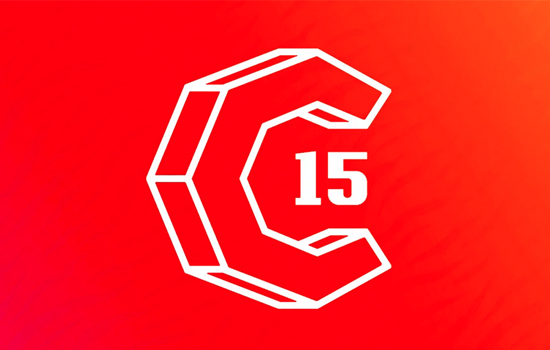%leftsidebar%
#macro:bloglist,3066,tagging#
I currently subscribe to 130 RSS feeds which deliver over 200 posts a day to my reader. For most of these posts I merely skim the title and move on. Others get a cursory scan of their content. And a few get read in their entirety. In the past, whenever I found a helpful website I’d bookmark or “favorite” it in my browser. But today, with the quantity of information I have to contend with, my browser’s bookmarking tools are inadequate. (Well, maybe the new bookmarking system in Firefox 3 could handle it, but there are other reasons why I feel that a browser isn’t the ideal place for my bookmarks). Besides, importing and exporting bookmarks when I upgrade or switch browsers is a pain.
Rather than relying on my browser’s bookmarks I use a site called del.icio.us. Del.icio.us is basically an online alternative to browser-based bookmarks.
%leftsidebar%
#macro:bloglist,3066,tagging#
When I save a page on del.icio.us I include a quick sentence to describe the page–otherwise I’d probably forget why I saved it in the first place. But in addition to writing a description I also assign tags.
A tag is just a word (or short phrase) used to describe or categorize content, in this case my bookmarks. These tags act as filters which, when clicked as links, list all my bookmarks that carry that tag. In contrast, browser-based bookmarking tools provide folders for organization. Folders are fine, but tags are better since any number of different tags can be applied to a single bookmark. Folders are hierarchical, tags are organic. Folders are rigid, tags are flexible.
Tags mark a significant improvement in managing and organizing information. For example, when I write my newsletters my tags make it easy to recall the insights and information I’ve encountered over time.
Now if tags were merely an improved mechanism for organization I wouldn’t be writing this newsletter, and I certainly wouldn’t call myself a tagging junkie. But there are greater forces at work behind tagging.
%leftsidebar%
#macro:bloglist,3066,tagging#
My tag usage has evolved over time, I currently have over 1,100 pages tagged in del.icio.us. Having tagged so many pages I’ve established some personal practices and categories. For example, I generally use one word tags and spell them out with lowercase letters. If one word won’t work I invent a compound word like “projectmanagement.” I’ve opted for this format because of my preferred way of viewing my tags. Tags can be listed out alphabetically. In the standard list view each tag includes a number to indicate how many items are assigned to each tag. But I prefer the “cloud” view. The cloud view shows all my tags in a running paragraph. It uses color and size to indicate usage. The more I use a particular tag, the bigger and brighter it displays in the cloud. It’s a fascinating picture of my tagging interests. I’ve adopted the single word, lowercase practice because I find the tag cloud easier to read when all the tags are single, lowercase words.
Over time I’ve had to adjust my tag usage. I used to have pairs of similar tags for the same purpose, one singular and one plural. At first when I tagged examples of beautiful typefaces I’d use the tag “fonts” but then I began adopting the practice of using the singular for my tags. Thankfully del.icio.us has great tag management tools so I was able to easily re-tag all occurrences of “fonts” to “font” in one fell swoop.
The del.icio.us autocomplete feature also helps me keep my tag cloud relatively clean. As I begin typing it displays my matching tags–so my poor typing and spelling skills rarely create tag typos.
If you haven’t explored the world of tagging you might be thinking “so what? a website version of browser bookmarks, interesting but not exactly revolutionary.” Adding descriptions and tags to bookmarks and using an online service instead of the browser is neat, but that’s just the tip of the iceberg.
As soon as I moved my bookmarking to del.icio.us I realized that my bookmarks weren’t just my bookmarks anymore. The default state of a del.icio.us bookmark is “shared.” While you can set any bookmark to private status, the intention of a site like del.icio.us is to share. I admit that during my first few days of bookmarking, I set most of my links to “private.” But I soon realized the benefits of sharing, and I got used to the idea my bookmarks aren’t exactly state secrets. And by keeping my bookmarks and tags open, I can access them from anywhere on any computer–not only that, I can refer others to them as well. I was giving an interview for How magazine last month for their self-promotion annual about advertising agencies and their own websites. Lisa Hazen, the author of the article, wanted some examples of agency sites that I thought did a good job. Since I have a category for “agencysite” in del.icio.us I pointed her to del.icio.us/ericholter/agencysite where she could see the sites I’d tagged and a brief description of what I thought about them. Want to see what I’ve tagged recently about web based office application alternatives? Go to del.icio.us/ericholter/weboffice.
The public nature of tagging bookmarks on del.icio.us makes sharing information so much easier.
When I tag an item “weboffice,” del.icio.us not only adds that tag to my collection of links, it also mixes my use of that tag with the world’s. So in the same way that you can go to del.icio.us/ericholter/weboffice, you can also go to del.icio.us/tag/weboffice and get a list of every page that has been tagged “weboffice” by everyone else.
If this were merely a long list of links it would not be very helpful. But two elements add a lot of value. First, it displays all the other tags people have used, in addition to “weboffice” for these pages. In this case you’d see that some people used the word “webapplication” for these same pages. Viewing items tagged “webapplication” may lead to valuable discoveries.
The second helpful element is seeing how many other people have saved the same link. The collaborative nature of tagging not only leads to discoveries of shared content, but it also adds the element of recommendation. Just recently I tagged a new site that I heard about through Read/Write Web about an annotation web service called “Awesome Highlighter.” I added my “annotation” tag to it. I have about eight other sites tagged “annotation” but I wanted to see what other people had tagged “annotation” so I clicked the “all” link. I found a site called Fleck. Fleck has been saved by 1054 other people. Clearly Fleck is another popular annotation service. I added it to my tags for future review. (Now it’s saved by 1055 other people).
%leftsidebar%
#macro:bloglist,3066,tagging#
Tag categories are not scientific. Melvil Dewey, of Dewey Decimal System fame, would be rolling in his grave at the free form, disorganized categorization of all this random tagging. How I catalog and group my bookmarks is going to be different from everyone else. And my classifications are going to run the gamut. Most will correspond to actual subject matter, but some tags will relate to my opinions, or my intentions for the content. A blog post about social media would certainly get tagged “socialmedia” but I might also tag it “review” if I intend to write a review of the post. I might also tag it “writing” if I happen consider it an exceptional example of the use of language. But these personal tags would have little meaning to anyone else. This loose, personal, unscientific tagging process is sometimes referred to as a “folksonomy” in contrast to formal taxonomies like the biological categories (kingdom, phylum, class, etc.).
It’s true that the organic nature of tags will generate some noise. Tags will mean different things to different people, not to mention inherent confusion between homonyms. If I’m a botanist and tag something “root” I probably mean something very different than a system administrator would for the same tag. But noise is okay as long as we have systems that can filter it out. One of the filtering systems of del.icio.us is context. If, for instance, I list out bookmarks tagged “root” I see related tags; some refer to operating systems, and others go to recipes for making great root beer.
Navigating the potential messiness of tags is a small price to pay for the benefits they create. Sharing, discovery and recommendation are a few of these benefits, but smartness is another.
%leftsidebar%
#macro:bloglist,3066,tagging#
Last month I needed to add a quick contact form to a blog I was working on. Web forms are tricky business; anyway you slice it, building and running a web form is a complex procedure. Then I remembered that I had tagged a few web services that offered simple form development. I went to my tags for “forms” and found a bunch. Among the list was Wufoo, a site I had discovered many months before. Without having saving and tagged it I would never have remembered it. And I also saw that Wufoo had been saved by 7,701 other people–quite a recommendation. I checked them out, and ended up using them to add a quick form to the blog. Saved me a ton of time.
I could end this newsletter here and feel like tagging is an incredible leap forward. But my favorite aspect of tagging is the way it extends and improves knowledge on the fly. I frequently discover web applications, services, or informational tidbits that are helpful for all of us here at Newfangled. I could email the link to everyone, but instead we’ve set up some internal practices that combine the power of RSS and tagging. Suppose I see an article about how to optimize Google Analytics installations. That’s something our R&D team should know about, and our project managers would benefit from the knowledge too. We have a few internal tags we all use whenever we want to share a tag with the group. Because any tag can be subscribed to via RSS anything that gets tagged with one of our internal tags instantly gets fed into all of our RSS readers. Nice!
I also subscribe to a couple universal tags. For example I subscribe to del.icio.us/tag/advertising2.0. If anyone in the world uses the tag “advertising2.0” I get it in my RSS reader.
Another way I use del.icio.us is to extend and improve my newsletters by embedding my del.icio.us tags on these pages. See that block over there on the right that says “Eric’s del.icio.us bookmarks tagged: tagging.” This is called a “tag roll.” It’s being pulled dynamically from my del.icio.us account, filtered by whatever tag relates to each newsletter’s subject. In this case the subject is “tagging.” So this tag roll is displaying the latest items in my list that I’ve tagged “tagging.” If you come back to this page tomorrow and I’ve tagged any new pages “tagging” those new pages will display there. And I won’t have to do a single thing to update my site other than add the tag to del.icio.us. This means my newsletter pages are always growing and being augmented by further information, information that changes almost everyday.
%leftsidebar%
#macro:bloglist,3066,tagging#
I’ve been using del.icio.us throughout this newsletter to describe the functions and benefits of tagging. But remember it’s not just bookmarks. Flickr tags photos, blogs tag posts, music can be tagged on Last.fm, RSS feeds can be tagged in Google Reader, products can be tagged in some e-commerce sites.
And as far as bookmark tagging goes, del.icio.us isn’t the only game in town. In fact I use Diigo (which automatically adds my tags to del.icio.us) because of its annotation options.
Normally, before I’d conclude a newsletter like this I’d list out a few of the other popular bookmarking and annotation sites. But since you now know about tagging you can just use my tags below to find them (check “tagging”).


